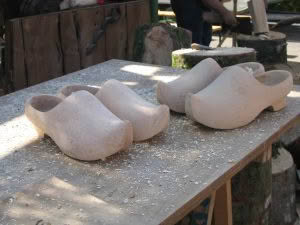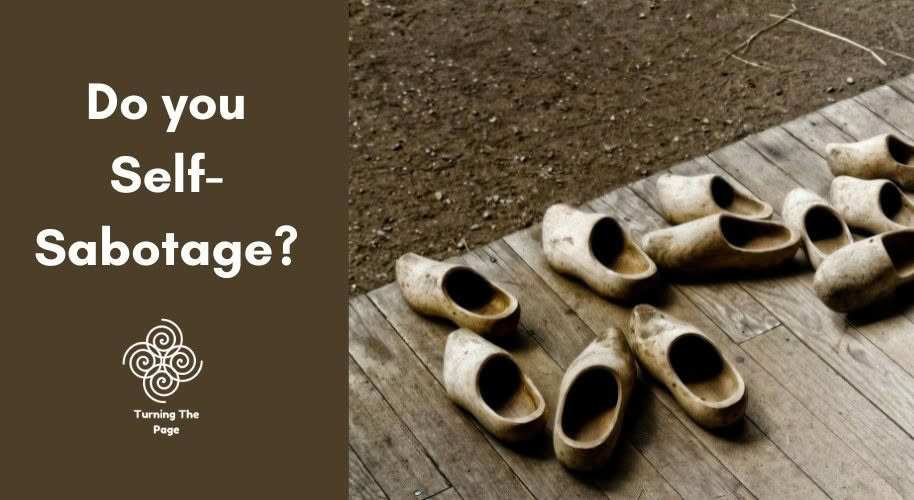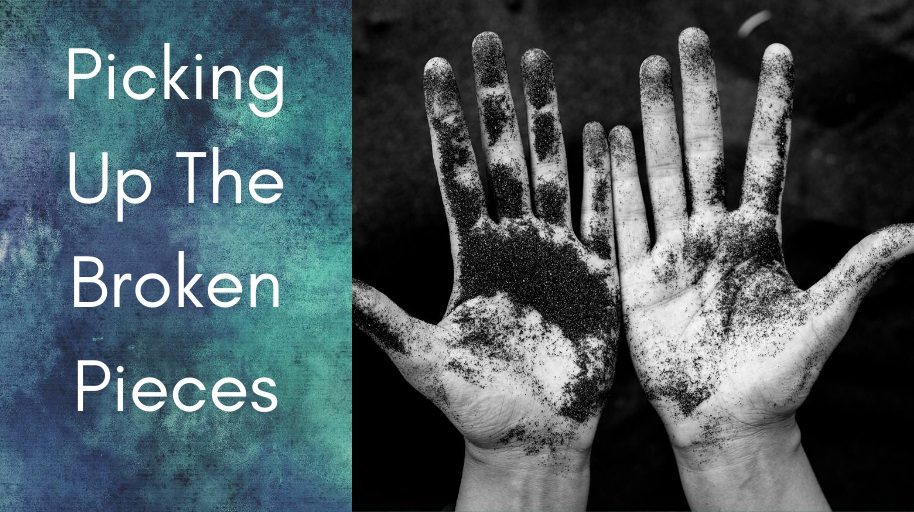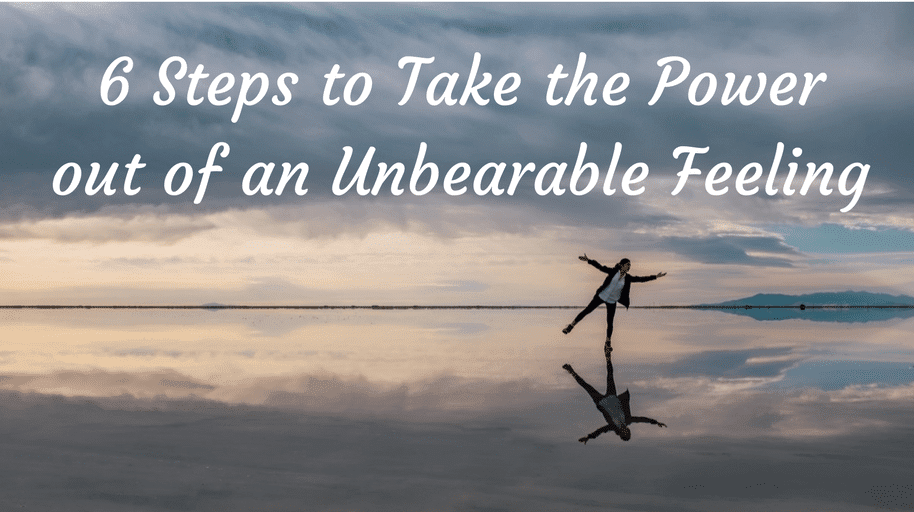You step out to make a change, but then it stops. There is sabotage, a self-sabotage, but with good listening we can see movement forward
One of the saddest things you can see is when someone sets out to change some aspect of their life, they get to a certain point, and then suddenly they stop the process. They make excuses, procrastinate, and pull back.
They self-sabotage.
You help them set out a very simple plan.
Millimetre steps all the way, but then they either consciously or unconsciously throw a spanner in the works.
Or, if we want to look at the meaning behind the word ‘sabotage’, they throw a wooden shoe – ‘sabot’- into the machinery.
The process stops.
I get emails from people who want to change. To leave the addiction, depression, anxiety, storm of wild emotions, even recover from a physical illness. I offer small, simple steps, and then something seems to appear and they pull back.
I often read the words ‘self-sabotage’ in the white space between the letters of the emails I receive.
Self-sabotage
The background of the word ‘sabotage’ is interesting.
It comes from the French word for sabot, the wooden shoe.
Sabots were considered a work shoe associated with the lower classes in the 16th to 19th centuries.
During this period, the years of the Industrial Revolution, the word sabotage gained currency.
An alleged etymology describes the actions of disgruntled workers who willfully damaged workplace machinery by throwing their sabots into the works.
In truth, sabotage is derived from the noise and clumsiness associated with the wooden sabot shoe.
The English word derives from the French word saboter, meaning to “bungle, botch, wreck or sabotage. “
It was originally used to refer to labour disputes, in which workers wearing wooden shoes called sabots interrupted production through different means. Wikipedia

Could sabotage be like the act of throwing wooden shoes into the machinery of change?
Could sabotage be like an interruption of something noisy and clumsy? Something ‘ill flitting’ to one who longs to run? Something within ourselves that whispers, or even shouts, ‘No, don’t do that’
Is self-sabotage the act of throwing wooden shoes into your own process of change?
Is self-sabotage the behaviour that follows the noise and clumsiness of thoughts and feelings that trigger off when unbearable feelings come?
I see it all the time, and I do it myself.
The slightest resistance, the smallest challenge to doing something new, and thoughts and feelings appear.
A wooden shoe flies through the air.
We procrastinate. We pull back. Hesitation superglues us to the normal and familiar.
Even the great and powerful can self-sabotage their efforts to change.
Naaman the self-saboteur
A story from the Bible might be of interest.
The king of Aram had great admiration for Naaman, the commander of his army, because through him the Lord had given Aram great victories. But though Naaman was a mighty warrior, he suffered from leprosy.
At this time Aramean raiders had invaded the land of Israel, and among their captives was a young girl who had been given to Naaman’s wife as a maid.
One day the girl said to her mistress, “I wish my master would go to see the prophet in Samaria. He would heal him of his leprosy.”
So Naaman told the king what the young girl from Israel had said. “Go and visit the prophet,” the king of Aram told him. “I will send a letter of introduction for you to take to the king of Israel.”
So Naaman started out, carrying as gifts 750 pounds of silver, 150 pounds of gold, and ten sets of clothing. The letter to the king of Israel said: “With this letter I present my servant Naaman. I want you to heal him of his leprosy.”
When the king of Israel read the letter, he tore his clothes in dismay and said, “Am I God, that I can give life and take it away? Why is this man asking me to heal someone with leprosy? I can see that he’s just trying to pick a fight with me.”
But when Elisha, the man of God, heard that the king of Israel had torn his clothes in dismay, he sent this message to him: “Why are you so upset? Send Naaman to me, and he will learn that there is a true prophet here in Israel.”
So Naaman went with his horses and chariots and waited at the door of Elisha’s house.
But Elisha sent a messenger out to him with this message: “Go and wash yourself seven times in the Jordan River. Then your skin will be restored, and you will be healed of your leprosy.”
The unbearable feeling
But Naaman became angry and stalked away. “I thought he would certainly come out to meet me!” he said. “I expected him to wave his hand over the leprosy and call on the name of the Lord his God and heal me! Aren’t the rivers of Damascus, the Abana and the Pharpar, better than any of the rivers of Israel? Why shouldn’t I wash in them and be healed?” So Naaman turned and went away in a rage.
But his officers tried to reason with him and said, “Sir, if the prophet had told you to do something very difficult, wouldn’t you have done it? So you should certainly obey him when he says simply, ‘Go and wash and be cured!’”
So Naaman went down to the Jordan River and dipped himself seven times, as the man of God had instructed him. And his skin became as healthy as the skin of a young child, and he was healed! 2 Kings 5:1-14
Naaman’s wooden shoe
The plan was simple.
Go to see Elijah, and he will heal you.
All was going well until the method of his healing triggered an unbearable feeling in Naaman.
I believe Naaman’s unbearable feeling was a fear of being humiliated, exposed, embarrassed, laughed at or ridiculed.
The great Naaman expected the ‘therapist’s’ admiration of his powerful position. Elijah didn’t even come out to greet him.
Naaman wanted the grand sweep of a magic wand; instead, it was dipping himself in the dirty Jordan River.
He wanted it done his way, and he bought a lot of wealth to see it come about.
When he didn’t get this, the wooden sabot came out, and he threw it into God’s very simple, but humanising process.
The great and mighty Naaman had an intense fear of looking small.
We could say God threw a sabot into Naaman’s life. God often can be a saboteur to our carefully laid out plans.
What we need to stop self-sabotage
What do we learn about self-sabotage from this story?
- There is an entrapment in our self-sabotage habits that we don’t see ourselves.
- That we have an inner world that holds unbearable feelings ready to trigger off.
- We need wise heads who can recognise a ‘sabot’ when they see one and can coach us through the sabotage.
- We need people of vision to see beyond the emotional expression of the ‘sabot’ to a time where things will be different. They have a compelling vision.
- We need courageous people to speak up when they see a saboteur appear
- Pay attention and pinpoint the emotions that arise. Feelings are real, but they don’t have to dominate and control.
- We can choose our responses to the events that happen. Event + Response = Outcome. Naaman responded with anger at first, but then he chose a different response. If you want a different outcome, then choose a different way to respond.
- Separate the feeling out from the process and choose to do the work.
- We need to break the process down into the simplest of steps.
- We need to take action regardless of the echoed thoughts and feelings we might be experiencing from a previous time
Quotes to consider
- Underneath self-sabotaging behavior, there is always an intense fear that can feel almost unbearable to examine. This fear is the real problem. Toxic procrastination is just a result of the various strategies we use to avoid the fear. Lauren Sapala. Writers Who Can’t Write: Healing the Pain of Procrastination and Perfectionism
- The only reason I can’t jump in and engage life is that I’ve told myself I can’t. Yet I can’t helping wondering would happen if I told myself I could?
- Believing all of my emotions is the shortest way into the loop of insanity. First the truth, then faith in the truth, then the feelings will come around. David Riddell
- Some people will deliberately ‘shoot themselves in the foot’ in order to get back familiar feelings of failure, because ‘familiar’ always feels safer. David Riddell
- When I believe my feelings, and those feelings misrepresent reality, I am headed for a self-referential pit that will get deeper and darker as I dig myself into my home-made delusion. David Riddell
- My feelings may in fact only be leftovers of another time, another place, another person; but have those feelings ever been told that it’s over? (That was then, this is now.) David Riddell
- The feelings you feel outside your comfort zone will be identified as ‘threatening’ or ‘exhilarating’, depending on how your parents labelled them at your first experience. David Riddell
- The priority of your feelings are to be safe and comfortable, but the divine priority for your life is to risk and grow. Which will it be? David Riddell
Questions to answer
- Where do you self-sabotage?
- What are your unbearable feelings? Why are they there?
- The King of Israel had an unbearable feeling triggered. What was it, do you think, and how did he respond?
Formation exercise
- We see God throwing a sabot into the carefully laid out plans of Naaman buying his healing, of maintaining his ‘puffed up’ arrogance, of the desire for a quick fix magic wand show where nothing was personally required of him. God, the saboteur of man’s plans! Consider how God has thrown a ‘sabot’ at times into your plans?
Further reading
Barry Pearman
Photo by Nickolas Nikolic on Unsplash
YOUTUBE
Contact me





